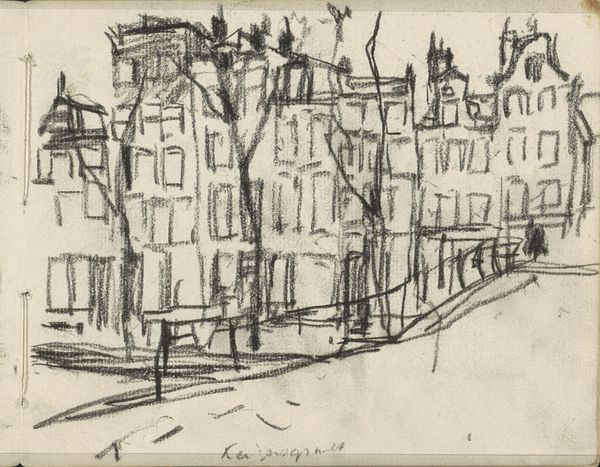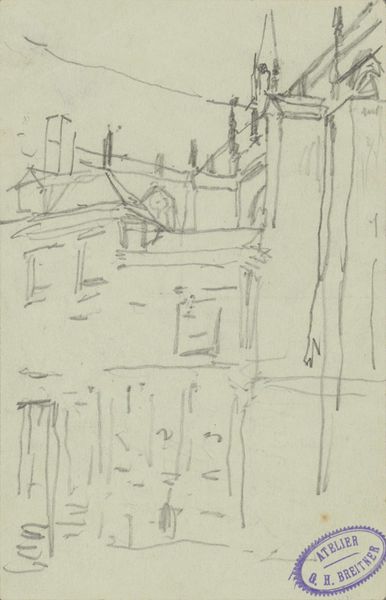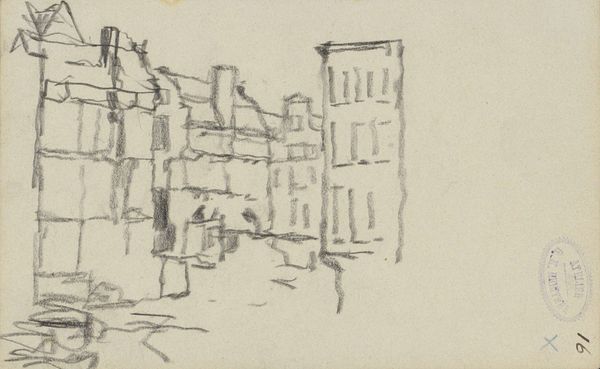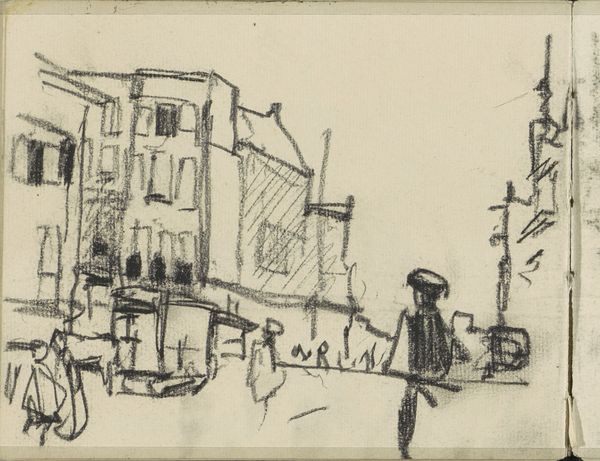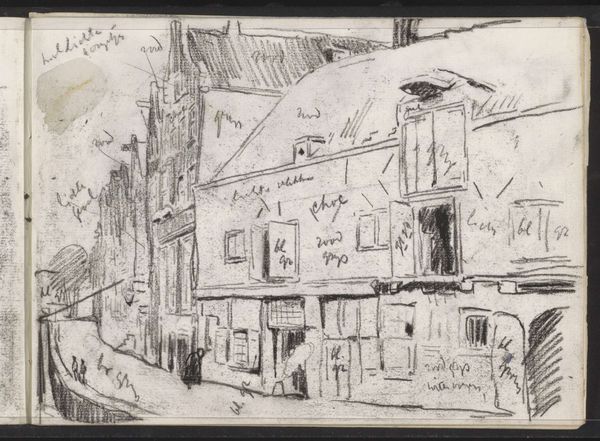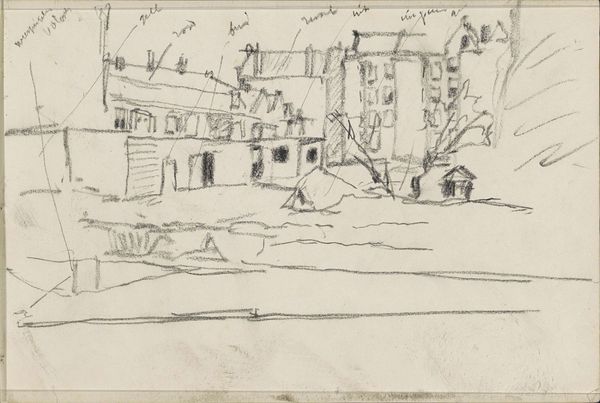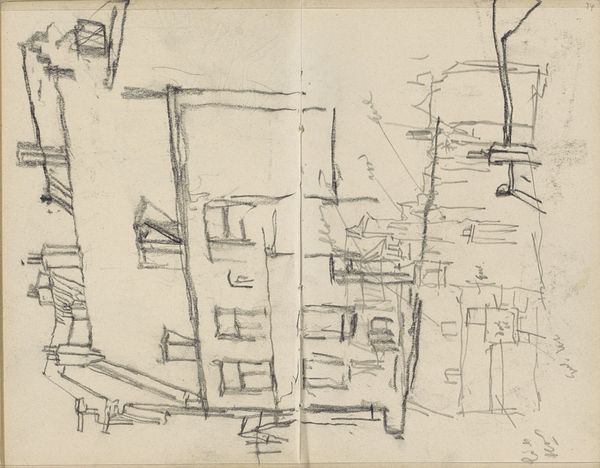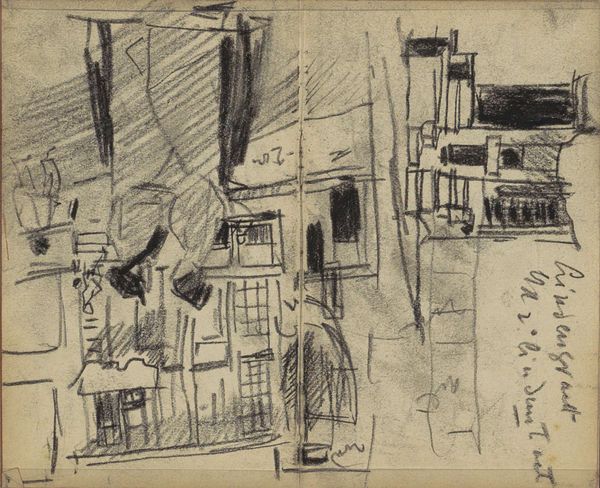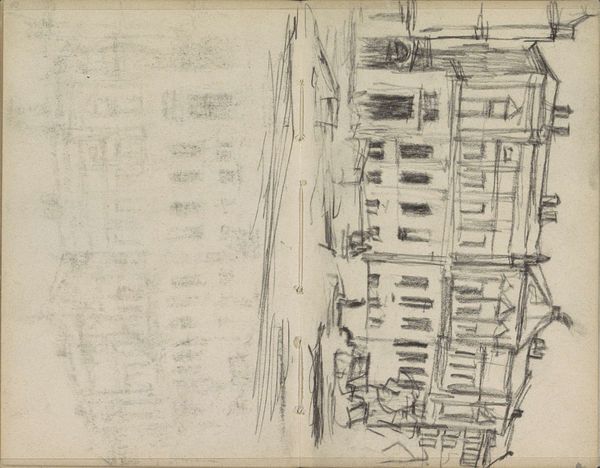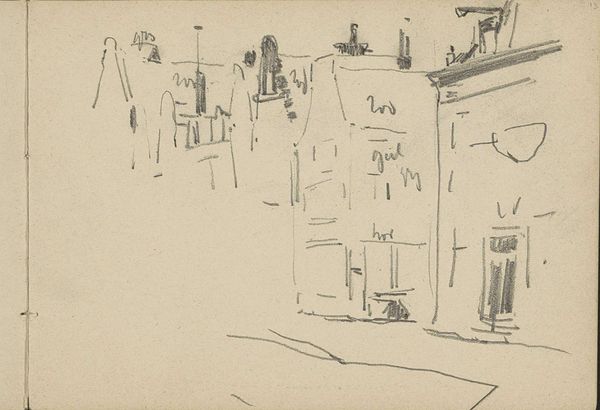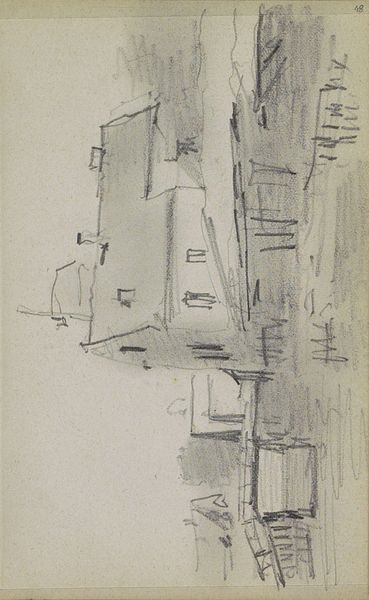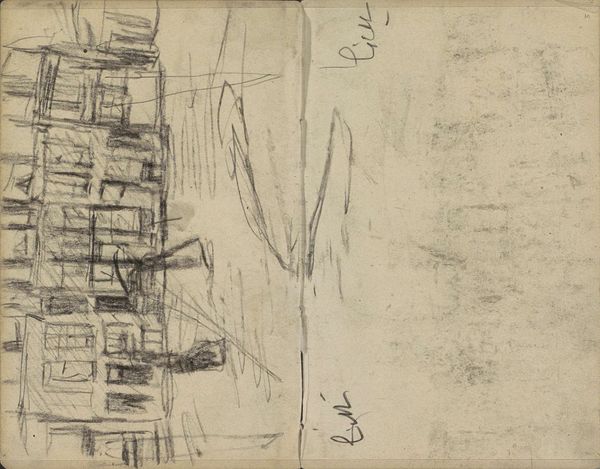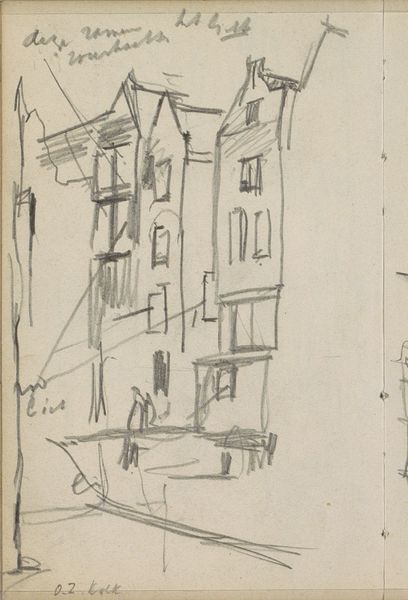
Prinseneiland te Amsterdam, mogelijk gezien vanaf de Sloterdijkbrug c. 1906 - 1923
0:00
0:00
Copyright: Rijks Museum: Open Domain
Editor: This is "Prinseneiland te Amsterdam, mogelijk gezien vanaf de Sloterdijkbrug," a graphite drawing by George Hendrik Breitner, created sometime between 1906 and 1923. The sketch-like quality gives it an almost ghostly, transient feel. What strikes you most about it? Curator: What interests me is Breitner’s choice of subject and how he depicts it. This isn’t the Amsterdam of tourist postcards. It shows a working-class district. Can you see how the composition avoids the picturesque in favour of a grittier reality? It speaks to the artist’s social consciousness, aligning with the rise of socialist and social realist movements in that period. Editor: So, you’re saying it’s more than just a cityscape? Curator: Absolutely. Consider who is usually represented in art, and whose stories are deemed worthy. Breitner, known for capturing Amsterdam’s street life, gives us a glimpse into a neighbourhood and a population often ignored. The rapid lines suggest a fleeting moment, a snapshot of everyday existence for those living and working there. Do you think this piece challenges the traditional hierarchy of subject matter in art? Editor: That makes a lot of sense. It's like he's giving a voice to a part of the city that was normally overlooked. It definitely feels more immediate and less posed than some of the grander landscapes of the time. I hadn't really considered how political a seemingly simple sketch could be. Curator: Exactly! Art is always engaged with the politics of its time. Considering these sketches of everyday life, of working-class districts, as equally valid and deserving of attention expands the historical narratives in art. Editor: I learned that art is deeply rooted within cultural and historical context and art pieces, such as this sketch, may open new perspectives and dialogues about it. Curator: Yes, absolutely! Understanding those layers adds profound depth to how we perceive art, and its role in reflecting, shaping, and even challenging societal norms.
Comments
No comments
Be the first to comment and join the conversation on the ultimate creative platform.
